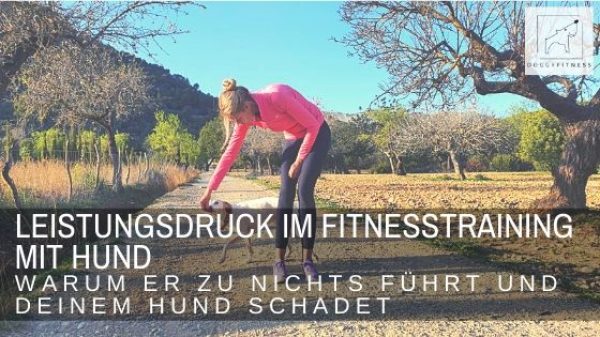Recently, exercise training and dog fitness are experiencing a real hype. Basically, I am of course pleased that dog owners are concerned with the health of their dogs and want to be actively involved. This is exactly what I want to achieve with my training approach. If you as a dog owner train with your dog – of course always after appropriate professional guidance – you not only promote the health of your dog, keep and make him mobile, delay the aging process and much more. Your vision and perception of your dog’s movements will also improve. Fitness training dog Fitness training dog
You suddenly see if your dog is sitting correctly, if he is walking in a pass gait, or if he has some other abnormality in his movement.
Of course, you should not take the diagnosis of a veterinarian here. But your perception is sensitized and so there is a chance that diseases of the musculoskeletal system will be detected and treated earlier. So far so good.
Higher, faster, further – for the benefit of health?
Unfortunately, there is a downside to all of this. What I’ve been noticing more and more lately is that health training is coming up with strange things. What I don’t like in the development of dog fitness training and exercise trainingis that there are always dog owners who are clearly overambitious.
Not only that abstruse movement sequences are demanded from the dogs, which have no health effect. For example, how can a Border Collie with all four legs placed on a small balance pad actually train its muscles if it is completely cramped on this balance pad?
No, there is a perceived pressure to perform. And I consider it inappropriate either way in life with our dogs. But when it comes to an activity that should be beneficial to health and also fun, then even more so. That which has long been with us humans, seems to be reflected more and more in life with our dogs. The dog must work, perform, no matter when we want it to.
That is why performance pressure is inappropriate in dog fitness training
I take an extremely critical view of this development. If I want to build up an exercise with a dog – no matter how simple it is in my eyes – it will only work successfully if I train with my dog. Meaning, the way my dog can do it physically and the way he can do it mentally.
The pressure to perform, the need to function, and impatience are simply out of place. On the contrary. I think it is extremely important, in order to have a lasting training effect, that I give my dog a chance to think. He should work through the exercise at his own pace and in as small a way as he needs. This is the only way we have a chance of new, healthy movement patterns actually manifesting in the brain.
And if the dog only manages one or two repetitions, that’s perfectly fine. It makes a lot more sense if the dog repeats an exercise 1-2 times and correctly, than 5 times and the last three repetitions are only half successful.
In short: slow is the motto and less is more
Your dog is not every day the same performance fitness training dog
Do you know it? You set everything up for the training session, your dog is standing there joyfully, but somehow it doesn’t really go smoothly. I honestly admit: it happens with me and Tessa. Quite regularly, even. Just like us humans, our dogs are not equally efficient every day. And here it is not necessary to work through the program of the training plan dully, but to take into consideration the needs of the dog. If the dog is not in a good mood, he is not really on the job. He has difficulty concentrating and does not perform movements precisely. In the end, only frustration remains on both sides.
What to do when the dog is not in a “training mood”? Fitness training dog
Very simple: accept! If you feel your dog can’t concentrate or he’s just not up to it physically, this is the only sensible thing to do. When I’m in that situation, I always do one thing. Complete the training positively. If Tessa is unfocused and erratic, I move on to doing an exercise with her that is guaranteed to always work, and I immediately end the training with it. Even if it will be the only exercise. In Tessa’s case, this is the Doggy Twist – where she turns right and left around her own axis. That always works. And that’s all there is to it.
I don’t want Tessa to feel like she has “failed”.
For me, pressure to perform is taboo, I don’t reel off a program – even if it’s on my training schedule. Because my training partner is my dog – a living being. There it is necessary to be considerate and respectful if my dog is not able to perform.
New day, new luck fitness training dog
When you complete your training, as I do with Tessa, your dog will also feel that you are noticing and respecting his needs. This is the only way to ensure that the next day, he will be happy to participate in the next training session and that your training is not associated with frustration and compulsion, but with fun. This is the only way you can be successful in exercise training with your dog in the long run. Fitness training dog
All the love, your Tina
Dieser Beitrag ist auch verfügbar auf:
Français (French)
Deutsch (German)
Español (Spanish)
















